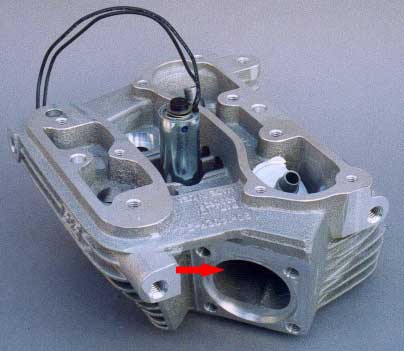![]()
Crank Calls and Big Hammers
Harley Davidson Evo Big Twins are notorious for cranking problems. Crank, crank, stall, crank, crank, start...or crank, stall, stall, stall, dead duck! In the get a bigger hammer theory of things we rush out and buy a tricko battery that promises over 500 amps cranking power. It works for awhile, then we find out that the 500 amps was only for the first 5 seconds and after that it was inferior to our old lead cell or gas filled Yuasa battery. More crank, crank, stall...then dead tricko battery. We go back to a new gas charged, sealed Yuasa that gives us more cranks for our buck and get an even bigger hammer...a super whammo high torque sextuple widget billet starter for big bucks, with enough horsepower to drag race an EV-1 and tighten lug nuts on a big rig. What the starter guys don't tell you is that there is no free lunch in this world and that you just bought a Mack truck that still has a moped battery supplying the juice...crank, crank, crank, stall, crank, start...then stall, dead duck when the battery is a little off, when the headlights are on, or when the oil is cold or even when the engine is hot. That battery under your ass sure doesn't look like the one in your trusty pickup truck, does it.
Pressure Cooker
S&S Cycle recommends you check your engine's cranking pressure with a good screw in compression gauge like you can get from your smiling high dollar Snap-On dude. They recommend 180-190 psi for street use and up to 200 psi for those who "insist on pushing the limits". Compare this to a stock bike which will be easily 50 psi lower and you can start to see what the problem is. Hell, the factory says if the cranking pressure drops to 90 psi it's still a runner. You can start to see what the problem is. Check out our RSR Advanced Dynamic Compression Calculator to see what the interaction of rod length, bore, stroke, static compression, cam timing and altitude is on your engines's dynamic cranking pressure.
S&S Provides The Answer

If bigger hammers aren't the answer, what is? Well, if you put a hole in the combustion chamber the compression will fall and the starter motor will spin the engine i.e. a compression release. Dirt bikes have them and the old British bikes had them to fight the Prince of Darkness. Recently, people have stumbled on chainsaw manual release buttons and screwed them into cylinder heads just above the spark plugs, one for each cylinder. The problem with this approach is that not all heads have enough casting material in this area for yet another drilling and tapping operation into your combustion chamber. A second problem is that they don't always stay open until the engine fires which leaves you with the interesting prospect of trying to hold one of them open with your left hand while you hit the starter button with your right hand. Then there is the problem associated with the addition of yet another "valve seat" into the combustion chamber.
S&S Cycle developed an Electric Compression Release Kit that solves all of these problems. Oh, you still have to have your battery well maintained and it's a good idea to have the headlight "off" during the cranking phase as well as leaving the throttle plate closed to stack things in your favor. The electric releases are tied to your starter and won't close until you release the starter button i.e. when the engine starts. They also do not invade the combustion chamber with a large tapped hole, nor do they vent externally...they vent through a cross-drilled passage into your exhaust port. Until someone comes up with an integral camshaft actuated device like on the Yamaha Road Stars or the new Harley Davidson V-Rod, these S&S releases are the best solution and are mandatory options on all 113 Inch ORCA motors.
RSR Fuel Injected ORCAS
No elecricity, no fuel injection. The RSR ecu has special circuitry designed for the Harley's notoriously wildly fluctuating electrical system but the high pressure fuel pump is another matter. If the voltage drops below 11 volts the pump will not run at all. When your non-compression release motor "stalls" the voltage can drop to 4 volts or less i.e. no fuel pressure. The RSR ecu has correction tables for battery voltages but cannot correct for fuel pumps that shut off or that have their output drastically cut. Compression releases and RSR Fuel Injection are mandatory partners. The new V-Rod has cam actuated compression releases and is fuel injected...maybe this is a good idea after all. RB Racing has over a decade fuel injecting big twins from stock Sportsters to 160 inch race motors...we've seen it all.